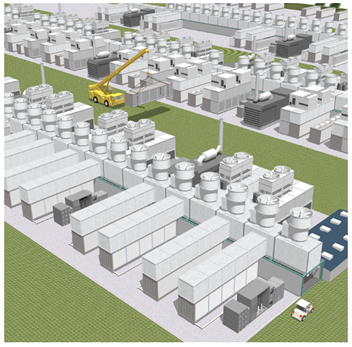The fourth generation of Microsoft data centers
 Microsoft marketing machine is gaining momentum in the beginning of the path to a new large-scale project. At the TechEd conference in Barcelona, Brad Anderson (Brad Anderson) said that the data centers for Azure and other platform parts of the Soft + Services concept are now being built at a very rapid pace, about one per quarter. New centers have already become one of the main priorities for the company.
Microsoft marketing machine is gaining momentum in the beginning of the path to a new large-scale project. At the TechEd conference in Barcelona, Brad Anderson (Brad Anderson) said that the data centers for Azure and other platform parts of the Soft + Services concept are now being built at a very rapid pace, about one per quarter. New centers have already become one of the main priorities for the company.In continuation of his words, on December 2, the head of the Microsoft data centers program Michael Manos (Michael Manos) described in his blog the main ideas behind the next, fourth, generation of such network nodes. They will become the most modular, which means easily expandable, unified, and at the same time with the ability to fine-tune to the needs of a particular application or customer. And besides, their module-container modules, due to their mobility, will help to easily deploy centers where necessary.
The problem is that today, none of the traditional OEM vendors Microsoft is ready to supply ready-made solutions for such data centers. Like Google, the Redmond company today would have to place orders for the production of special servers and, most importantly, make complex software that could manage such a huge amount of hardware on the fly. And the ability to dynamically and in real time connect and disconnect the power to keep them exactly at the required level - this is the way to improve the efficiency of the centers, for which everything is started.
But Microsoft’s business is built on close ties with numerous partners, so it’s pretty hard to imagine that a company would “take away the bread” from supplier companies like HP or IBM. Michael says that special component specifications are being prepared for future servers, which will then be assembled together right on the installation site. But still, there are no details about the technical part, nor about the deadlines, nor about who will take care of all this.
')
Software for managing new data centers is being developed as part of the Monsoon project. In addition, according to rumors , the Trebuchet project is also conducted in the same area. Its creators are experimenting with a “radically new network architecture” and with tools to ensure a flexible adjustment in the networks of the largest scales.
And although all this will obviously be published not tomorrow and not even in the near future, Microsoft’s own concentration on the unification of the next large emerging market of cloud computing is interesting. Fighting the legendary and still mythical Google OS is clearly not an easy task. And it is already obvious that this process will in one way or another affect the entire IT industry.
Source: https://habr.com/ru/post/47121/
All Articles